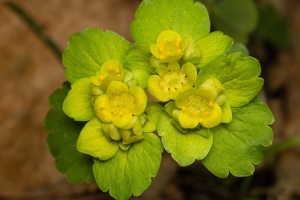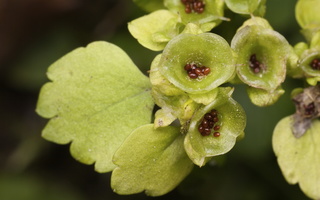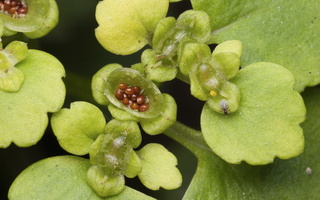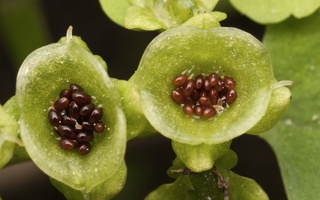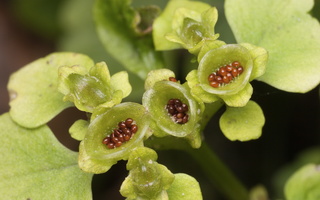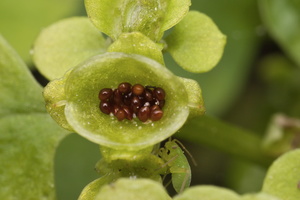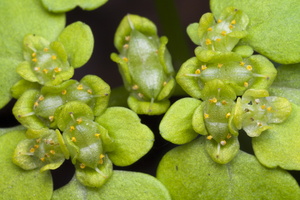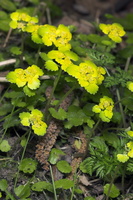- sort orderDefault
Photo title, A → Z
Photo title, Z → A
✔ Date created, new → old
Date created, old → new
Date posted, new → old
Date posted, old → new
Visits, high → low
Random
 home / Plantae · augalai / Saxifragaceae · uolaskėliniai / Chrysosplenium alternifolium · pražangialapė blužnutė
home / Plantae · augalai / Saxifragaceae · uolaskėliniai / Chrysosplenium alternifolium · pražangialapė blužnutė

Chrysosplenium alternifolium · pražangialapė blužnutė
- en.wikipedia.org/wiki/Chrysosplenium_alternifolium
- luontoportti.com/en/t/1304/alternate-leaved-golden-saxifrage
It is a perennial, mat-forming plant with trailing stems growing to a height of 5 to 15 cm. The alternately arranged leaves are stalked, broad and kidney-shaped with a few rounded shallow teeth and a few hairs. The flowers are surrounded by yellowish-green bracts and have down-turned yellowish-green sepals but no petals. The central flower in the corymb has five lobes and the others four lobes. There are eight stamens and two styles which are fused at the base. The fruit is a bowl-shaped lidded capsule. This plant flowers from April to June.
Daugiametis, 5-20 cm aukščio žolinis augalas. Stiebas stačias, sultingas, tribriaunis. Pamatiniai lapai 2-4, kotuoti, apskritai inkstiški, karbuoti, apaugę retais plaukeliais. Stiebiniai lapai pražanginiai, už pamatinius smulkesni, gerokai trumpesniais kotais. Stiebo viršūnėje žiedyną gaubia stambios, gelsvai žalios pažiedės. Taurelė 4-5 mm skersmens, keturiaskiautė, iš vidinės pusės ryškiai geltona. Žiedyne viršūninis žiedas su 10 kuokelių ir penkiaskiaute taurele. Taurelės skiautės plačios, jos pamatas suaugęs su mezgine. Vainikėlio nėra. Vaisius - vienalizdė, tokio pat ilgio kaip taurelė, su 2 rageliais dėžutė, atsidaranti išilginiu plyšiu ties vaislapėlių siūle. Sėklos juodos, blizgančios.
Žydi balandžio - birželio mėn. Auga miškuose, krūmuose, pamiškių pievose, upių, upelių ir ežerų pakrančių krūmynuose, šlapiose, šaltiniuotose vietose, kur gausu maisto medžiagų ir azoto.
